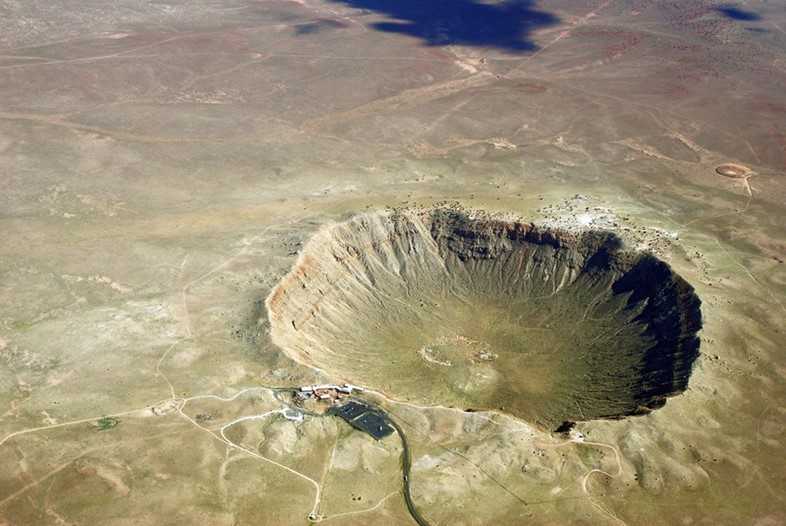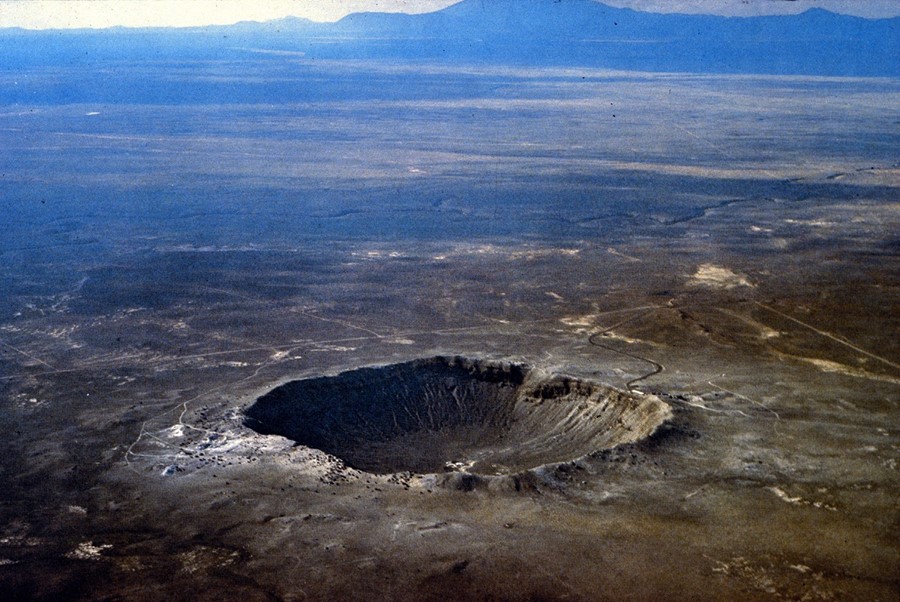A colossal hole in the Arizona desert reveals the destructive potential of asteroids — super/collider takes us to the edge
Where on Earth?
Meteor Crater, Arizona
GPS Coordinates: 35°1′N 111°1′W
Drive out along Route 66 east of Flagstaff in Arizona and the familiar icons of the American roadscape soon materialise out of the shimmering desert heat. Truckstops, casinos and RV parks mark your progress through the flat landscape at regular intervals, oversized retro diner signs compete with billboards for your attention and wondrous attractions, you’re promised, are never far ahead. Among these is Meteor Crater, which features a rad 80s logo and its own radio station playing an endlessly repeating promotional loop as you get closer.
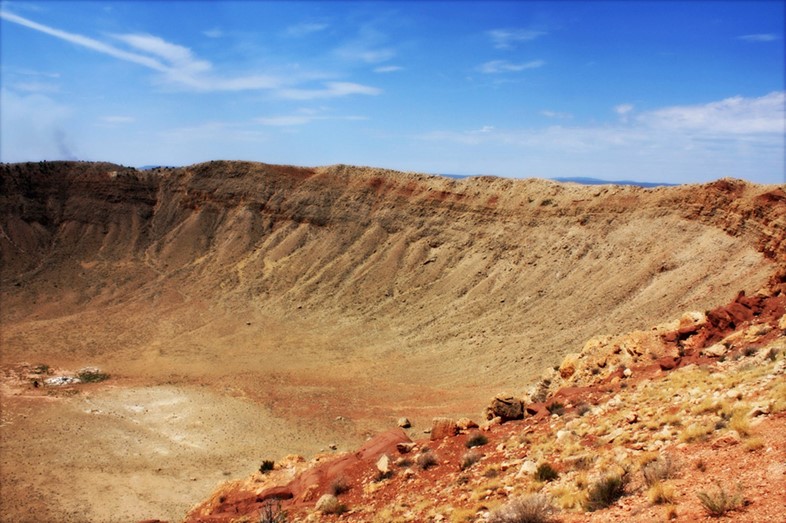
We’ve covered some extremely remote wonders in this column so far. This isn’t one of them. Those who decide to turn off and “discover the world’s best preserved meteorite impact site” pass a golf ball-shaped petrol station, another RV park and finally a subway en route to one of the wonders of our planet. It’s not until you climb to the rim of the massive crater that its sheer size and depth hit you – the mundanity of the approach contrasting with the awe of exactly what an asteroid travelling at over seven miles per second can do to our planet.
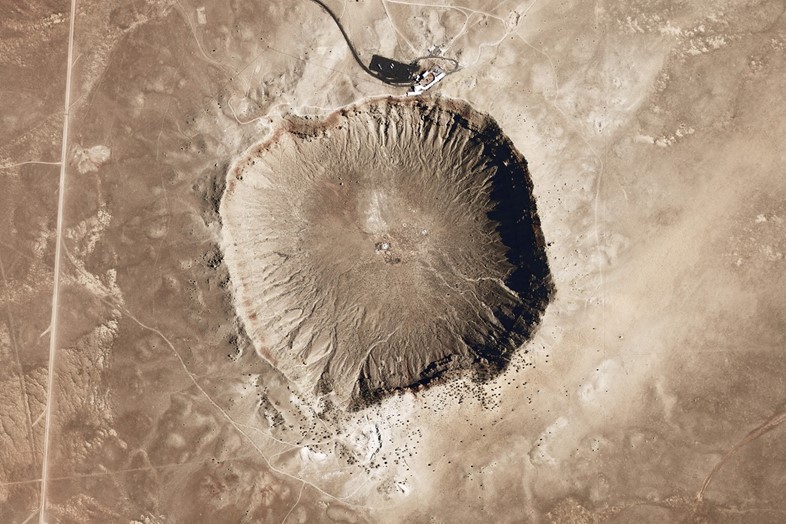
What on Earth?
Meteor or Barringer Crater as it’s dually-named was formed one sunny morning (let’s say) around 50,000 years ago. On that long-ago day, a tumbling space rock almost the width of a football pitch began the final part of a long journey that began eons ago in the asteroid belt, when an impact shattered a larger asteroid and sent its iron-rich core hurtling towards the Earth. Entering our atmosphere at over 26,800 miles per hour, it slammed into what is now Arizona’s Painted Desert in a cataclysmic explosion.
At the time, the landscape was cooler and, according to reconstructions by Dr David Kring of the Lunar and Planetary Institute, “an open grassland dotted with woodlands inhabited by woolly mammoths and giant ground sloths.” The meteor’s impact in this peaceful scene was catastrophic. In seconds, over 175 million tons of rock were blasted into the sky, sonic shockwaves rocked the air and land and all trees within 500 miles were flattened. Any animals within 15 miles of the impact site would not have come out well. But over time, the dust settled and water filled the crater, creating a new lake habitat. As the land slowly turned to desert, the lake dried up to leave the massive void we see today – a hole in the planet nearly one mile across, two and a half miles round and more than 550 feet deep.
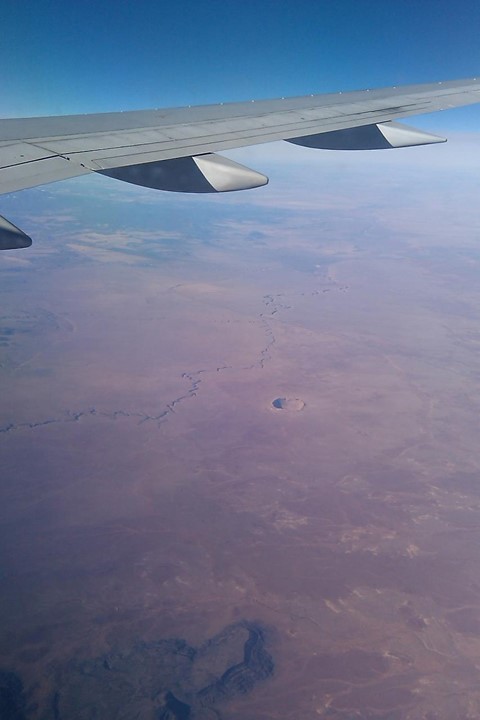
How on Earth?
Getting to Meteor Crater is easy but a car is recommended. From Phoenix head north to Flagstaff, which is surrounded by cool stuff like volcanic mounds (including artist James Turrell’s Roden Crater), petrified dinosaur footprints and lunar-looking Apollo testing sites. Then, simply head east on Route 66 (Interstate 40) and follow the signs.
Click here for more info.
